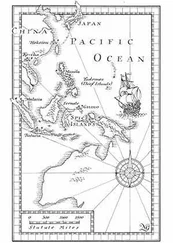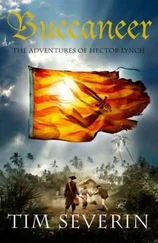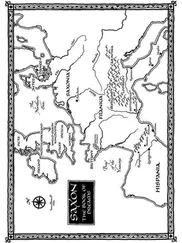Every boy in Iceland who dreamed of plunder and martial glory had heard about the Jomsvikings, but I had not known whether they were mythical or whether they really existed. If Thrand said they were real, then I was prepared to take his word on it.
'What did Grettir say when you told him that you and I would be going abroad?'
'He quoted some lines from the Havamal:
"A better burden may no man bear
For wanderings wide than wisdom
It is better than wealth on unknown ways
And in grief a refuge it gives."'
Thrand looked at me and with a note of compassion in his voice said, 'Appropriate, don't you think?'


Jomsburg was an indistinct smudge on the horizon for half a day. Since first light our ship, a weather-beaten merchantman owned by a syndicate of Wendish traders, had been edging slowly towards the home of the Jomsvikings, yet by noon we did not seem to have come any closer. After the dramatic cliffs and rocky shores of Iceland and Norway, I was disappointed by the apparently featureless Baltic coast ahead. Its monotony was accentuated by the grey overcast sky reflected in murky water under our keel. Thrand and I had already spent two weeks on the voyage and I was impatient to reach our destination. I stood gripping the weather shrouds as if I could drag the vessel bodily forward.
"We'll arrive at the time the Gods have decided, and that will be soon enough,' said Thrand, noting my mood.
'Is that where you won your hoard?' I asked, staring towards the dark line on the horizon where the sky met the sea.
'Not here, but in the company of comrades who lived here,' he replied.
"When was the last time you saw them?'
'Not since the great battle in Jorunga Bay against Earl Haakon of Norway more than thirty years ago.'
'Do you have any idea what might have happened to them since then? Have you heard anything?'
'No, not after our defeat,' he answered and walked away to the far side of the deck and stood staring down into the water, his face expressionless.
I would have left the matter there if one of the Wendish sailors had not sidled up to me. Ever since Thrand and I had joined the ship as passengers, the man had been glancing at my taciturn companion, trying not to let his curiosity show. Now as our ship crept closer to Jomsburg, the sailor took his chance to ask the question that had been on his mind for days.
'Old Jomsviking, eh?' he enquired in his heavily accented Norse, jerking his head at Thrand.
'I don't know,' I replied.
'Looks Jomsviking, sure,' said the sailor. 'Going to Jomi. Maybe for his friends. But not many to find now. They liked to die.'
I waited for a few moments and then crossed to where Thrand stood watching the water rippling gently past our scuffed hull and asked him what the sailor had meant. There was a long silence before the tall Icelander finally replied and he spoke so quietly that I had to strain to hear him. For the first time in all the years I had known him, Thrand's voice had a tremor of emotion. Whether it was sorrow, pride or shame, I could not tell.
'Only eighty came out of the sea battle alive; eighty of all those who did not turn their backs on the enemy. They took refuge on an island and ten of them died of exposure before the enemy hunted them down and brought the survivors before their executioner. Thorkel Leira was his name. Earl Haakon had ordered that no Jomsviking was to be left alive. Their hands and legs were bound so tightly that a stick had to be thrust through their hair — they took great pride in braiding their hair before battle — and each man was half-carried to his fate, as if he was a dead animal brought home on a pole after the hunt. The headsman asked the same question of each man, "Are you afraid of dying?"'
'What did they reply?'
'Some answered, "I am content to die," or words to that effect. Others insisted that they be allowed to face the headsman's sword so they could see the blow coming. One man's last request was that his hands should be untied so he could hold a dagger in the air while his head was lopped from his shoulders.'
'Why such a strange request?' I commented. 'What could he have been thinking of?'
'He said that in the Jomsviking barracks he and his companions had often discussed if the mind resides in the head or in the body, and now he had the chance to settle the matter. He had decided to hold up the dagger after death, so if he let it drop when his head left his body, then his head was the seat of his decision. However, if the dagger stayed clutched in his hand, then his body had made the decision and was sticking to it.'
'And what was the outcome of the experiment?'
'The dagger hit the ground before his body.'
'If I understood the Wend properly, he said that a few of the Jomsvikings survived. So why did Earl Haakon spare their lives when he had sworn to kill them all?'
Thrand smiled grimly. 'It was Sven the son of Bui's doing. He had exceptional yellow hair, long and glossy, and he was very proud of it. He grew it almost to his waist and spent a great deal of time combing and arranging it. When his turn came to go before the executioner he asked for someone to be assigned to hold up his hair so it did not get bloodstained when his head came off. Thorkel Leira agreed, and told his chief assistant to hold the hair to one side. Then just as Thorkel made his sword stroke, Sven jerked his head forward, pulling the assistant off balance so the sword struck the man's wrists, cutting off a hand. Of course Thorkel Leira was furious and was about to take a second cut at Sven and behead him properly when Earl Haakon, who had seen what happened, intervened. He said that the Jomsvikings were proving so awkward even in the manner of their death, that it would be easier to set the remainder free if they promised never to take up arms against him again. He knew that a Jomsviking honours his word.'
'How many were left alive to make that promise?'
'Just twenty-five of the eighty who were captured,' Thrand answered, and before I could put the obvious question he added, 'and, yes, I was one of them.'
It was dusk by the time our ship entered the channel leading to Jomsburg itself, and by then I realised I had been mistaken about the apparent monotony of the coastline. The final stages of our approach revealed a long line of cliffs, not ragged and raw as in Iceland, but a regular wall of brown and grey rock. At its foot a beach of rocks and boulders gradually changed to a long strip of white sand backed by dunes. Here we turned into a river mouth to find a town built on an island where a steep hill rose close to the bank. Its summit provided the site for the stronghold of the Jomsvikings. Watchtowers dominated a palisaded citadel and two long breastworks extended down the slope of the hill to enclose a military harbour within the protective perimeter. Heading for the commercial wharves, our ship continued upstream, and I noticed Thrand look into the mouth of the Jomsviking harbour as we passed. He must not have liked what he saw. The pilings which fronted the river were in poor condition, their timbers soggy and rotten. Two massive wooden gates faced with iron plates had formerly protected the entrance - in times of siege they could be swung closed, sealing off the harbour inside. Now they were sagging and askew, and the ramparts which had allowed the defenders to hurl missiles at their attackers were crumbling. The stronghold of the Jomsvikings looked rundown.
As soon as we docked, Thrand and I left the ship and set off for the citadel. The town looked prosperous enough and was far larger than I had expected, with a regular grid pattern of streets and numerous stalls, warehouses and shops, now shuttered up for the night. It was when we began to climb the hill towards the Jomsviking citadel that signs of neglect reappeared. The roadway was potholed and weeds grew along each side. Nor was the main gateway leading into the citadel properly guarded. A trio of bored soldiers made no attempt to stop us as we walked through the gate into the main enclosure. The space inside was a large oval and in its centre was a parade ground. On each side stood four large barn-like structures, which were clearly barracks. Each building was at least eighty paces in length, and solidly built from heavy tree trunks in blockhouse construction, with a roof of wooden shingles. I noted that three of the barracks were derelict. Their roofs had holes and in several places the roof ridges sagged. Only the fourth barrack block, the one nearest the entrance gate, was still in use. Its roof was neatly patched, smoke arose from several chimney holes, and at least a score of men were seated on benches at the main doorway, talking or playing a board game set on a trestle table between them.
Читать дальше










